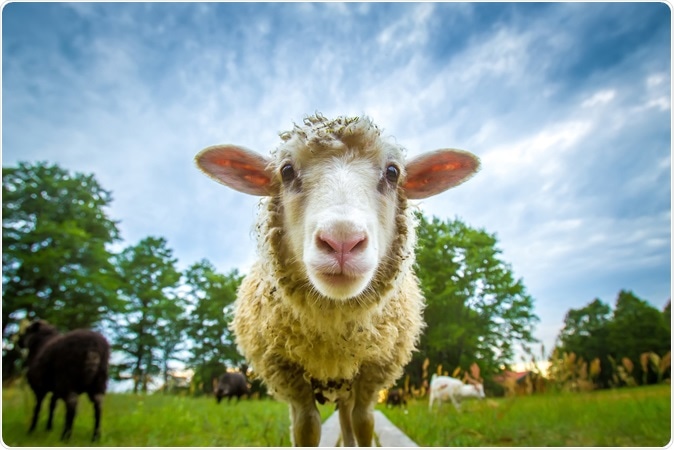There has been no research that explains what gives the curl to curly hair. To understand this, the researchers looked at the microscopic structure of the hair and measure the individual hair cells in the curly hair that could explain the curls. However human hair was found to be too thick for these experiments. So as a next step they looked at naturally curly hair or wool from six Merino sheep from New Zealand. This provided them with the answers they were looking for. The study results were published this week in the latest issue of the Journal of Experimental Biology.

Image Credit: FOTOGRIN / Shutterstock
The key finding from the experiment was that in hair that was curly, the cells that are outside the curls are longer than those that are inside. In straighter hair the cells in both outer and inner sides were similar in length. This has been seen at least in the sheep’s wool say experts and they believe that similar findings may be expected in humans. The cell length inside and outside of the hair bends thus determine the curliness of the hair. This, say researchers, could pave way for new hair care and styling products that could provide longer lasting curls or straightened hair. Cosmetics company, Kao Corporation from Japan, part funded this study.
Study’s lead author Duane Harland from AgResearch in New Zealand said that the reason why they chose sheep’s wool is because merino sheep wool is around five times finer than human hair but they have a similar biology. Thus this wool could act as a reliable hair model. Dr Harland said these fibres are of different sizes but are still relevant to human hair and additionally microscopes can penetrate more easily through the finer fibres of the hair to see the individual hair cells and gauge their differences. He explained that in order to understand and count the cells there has to be thin layers and minimal cells. Also the merino wool has no pigments and is transparent. This makes the cells better visible than human hair.
He explained that hair is made up of keratin protein. Within the hair there are parallel strands of this protein called the paracortical cells. There are also orthocortical cells that have twisted fibres of keratin protein. These orthocortical cells are outer cells that are longer while the paracortical cells are shorter. This could explain the curliness. The design is similar to an archway he said.
For the study the team sheared 6 merino sheep. They had kept the sheep in identical conditions for past 6 months. From the wool they chose 700 fibres for the experiment. Each of these was five micrometres or less in diameter and half a centimetre in length. The washed the fibres to remove the lanolin coating over them and revealed the natural state of the fibres. After drying them over a vibrating surface to prevent adhesion or kinking they were cut and examined under the microscope using electrostatic forces. They cannot be picked up individually said Dr. Harland because that would damage their insides.
Now under the microscope they could measure the curvature of the fibres and look at their cell structure. They noted from their observations that the orthocortical cells lay on top of the fibres and were longer than the paracortical cells at specific locations. Where the orthocortical cells were longer, the hair tended to curl. More studies are necessary to understand how these differences in length are important. Genetics of hair curling also needs to be studied he said.